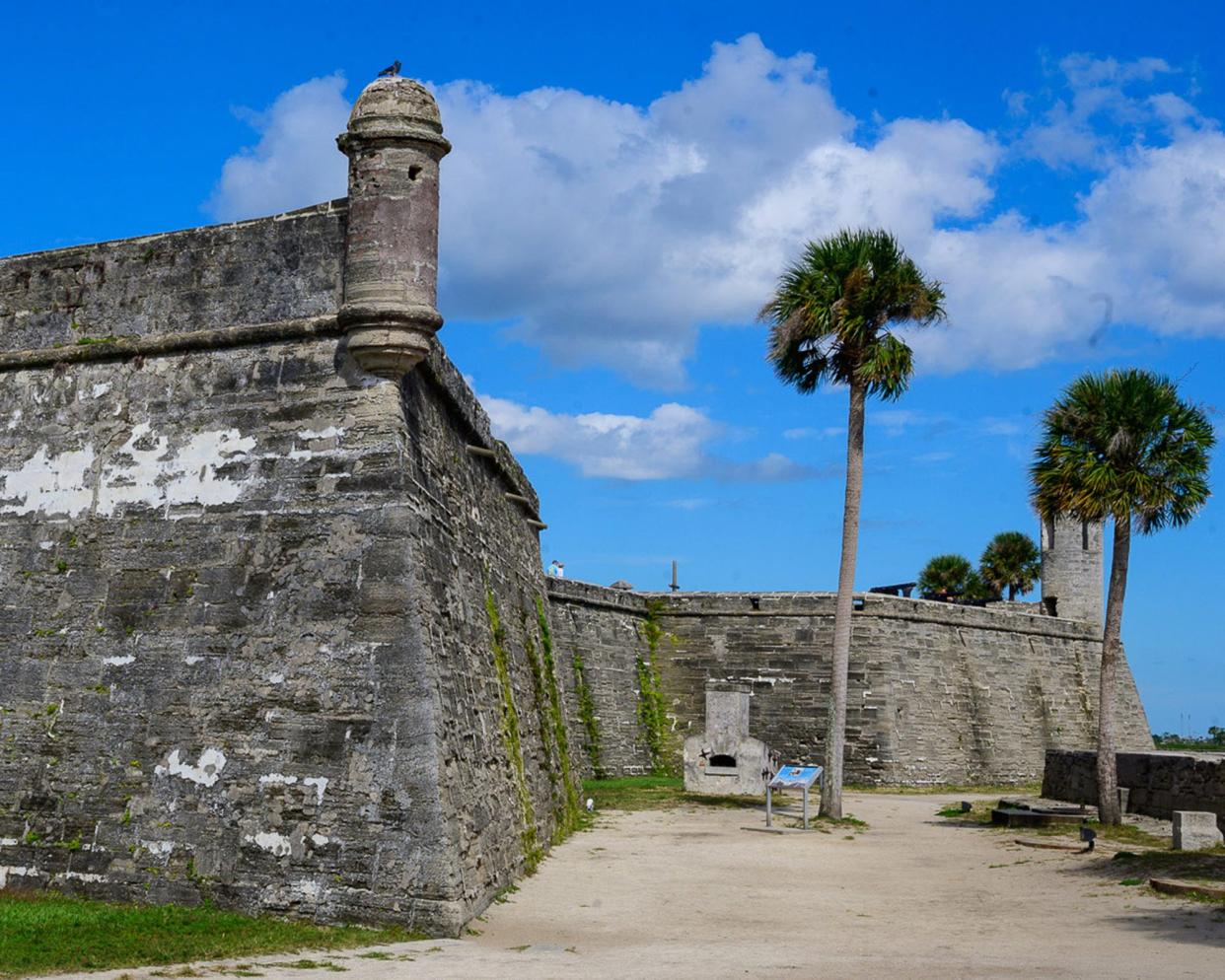Susan Parker | A history of the cannon at Castillo de San Marcos in St. Augustine

A few days ago, I made yet another visit to Castillo de San Marcos. I have led teachers, graduate students, U.S. and foreign dignitaries, reporters and videographers across the dry moat and into the 350-year-old castle. This time I was with two girls, ages 8 and 11.
Each sort of visitor asks different questions, but usually not with the enthusiasm and candor of the two girls. They have been here many times with me and have their own plan of attack at the Castillo.
The "dungeon" in the northeast corner under the tall watchtower is our first stop. I don't recall any diplomats or other officials stooping way down to fit through the very low opening in what was actually once an old storeroom for gunpowder. Today, the light in the "dungeon" is on all the time, but years ago the Castillo staff would turn out the light and provide a scary experience of total darkness in a small damp windowless room.
More from historian Susan Parker
Andres de San Miguel shares stories of time spent in St. Augustine
In Florida, homestead grants became vacation spots, not farms
Next we had to check out the large San Carlos watchtower on the northeastern bastion. Then off the girls ran to the cannon on the gun deck. Their interest was more in the decorative dolphins on the barrels than on the weapons themselves, and they quickly ran off to another watchtower.
I stood looking at the cannon and recalled reading so many reports of how the persons living beyond St. Augustine moved into the city and "under the protection of the guns of the Castillo" during times of attacks. I pondered that the cannon at the fortress today were not the ones in place to defend the Castillo and this city during attacks centuries ago.
As St. Augustine and the Florida colony were transferred back and forth between nations, the departing regime removed its own cannon. At times the outgoing nation and the incoming nation disagreed about the fate of the artillery – what pieces were to stay and which ones would leave.
When Spain transferred its East Florida colony to the United States in 1821, U.S. and Spanish representatives disagreed over the fate of Spanish artillery and archives. U.S. commissioner Robert Butler told Spanish Gov. Jose Coppinger that the treaty of transfer signed by Spain and the United States provided for the surrender of government archives, fortifications and all the cannon and artillery pieces in East Florida. Coppinger replied "no."
After offers and counteroffers, Butler and Coppinger compromised that the Spanish would leave the artillery mounted at Castillo de San Marcos and at Fort Matanzas, "if the United States transported the remaining unemplaced, tubes, field pieces and gunboat cannon." Butler accepted the idea.
How do we know about the details of the sparring between Butler and Coppinger over the artillery? We can read their communications because U.S. officials seized the Spanish archives from Coppinger's home office. Thus, the papers remained in the United States rather than being sent to Havana, Cuba.
Almost 40 years earlier, the transfer of Florida involved Spain's turning over its colony to Great Britain. British troops arrived in St. Augustine in the middle of July 1763 while the city's Spanish residents – and artillery – awaited ships to take them to Havana.
The sloop Industry (or Industrias in the Spanish documents) under Capt. Daniel Lawrence carried Spanish artillery away from our city. The ship then reversed its role and brought British cannon here. On Dec. 24, 1763, 58 residents left behind their St. Augustine homes and sailed for Havana on Industrias. Guns from the Castillo sailed on the ship as well.

Five months later, in May 1764, Capt. Lawrence and Industry approached St. Augustine bringing British cannon to the city. The Industry wrecked as it approached St. Augustine. The cannon sunk to the ocean floor, never reaching the gun deck of Castillo de San Marcos.
I did not tell the girls that part of the story as we stood in the hot and bright sun with the chatter of other visitors surrounding us. But I shall.
You can read about the wreck of Industry at the St. Augustine Lighthouse website.
Susan R. Parker holds a doctorate in colonial history.
This article originally appeared on St. Augustine Record: St. Augustine, Florida history: The cannon at Castillo de San Marcos

